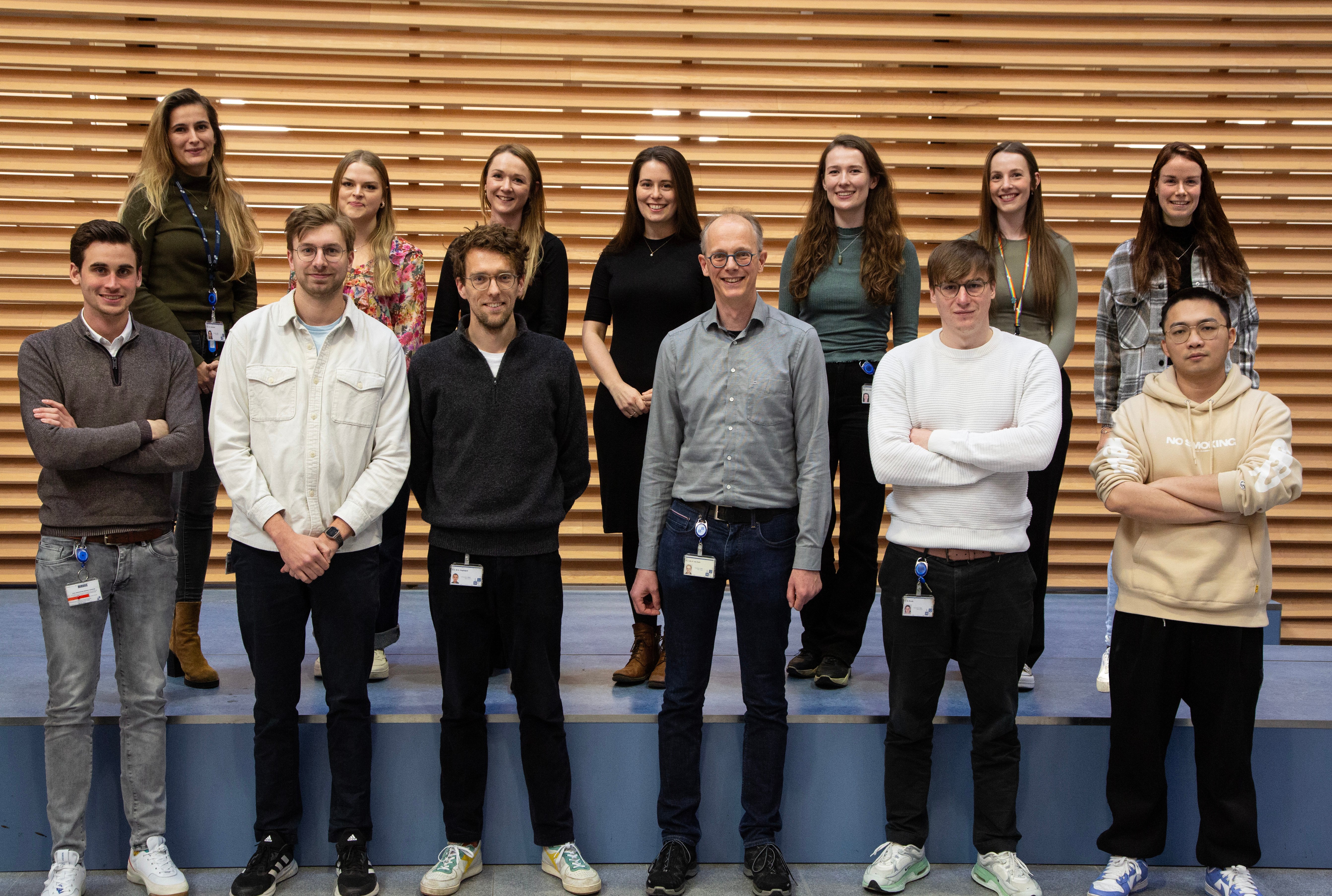MR Physiology
As a completely safe and non-invasive imaging modality, MRI provides us with extensive possibilities to probe the human physiology. Whereas in the last decade our main focus was on non-invasive measurements of cerebral perfusion by means of arterial spin labeling MRI, at the moment we are extending the application of these methods to other organs, whereas within the brain the focus shifts to other measures of cerebral physiology, such as oxygen extraction fraction, mean vessel radius, blood-brain-barrier integrity, etc. These techniques are implemented and tested in healthy volunteers, and subsequently applied in patient studies. From the application side we are mainly focusing on cerebral amyloid angiopathy, other small vessel diseases, and brain tumors.
…As a completely safe and non-invasive imaging modality, MRI provides us with extensive possibilities to probe the human physiology. Whereas in the last decade our main focus was on non-invasive measurements of cerebral perfusion by means of arterial spin labeling MRI, at the moment we are extending the application of these methods to other organs, whereas within the brain the focus shifts to other measures of cerebral physiology, such as oxygen extraction fraction, mean vessel radius, blood-brain-barrier integrity, etc. These techniques are implemented and tested in healthy volunteers, and subsequently applied in patient studies. From the application side we are mainly focusing on cerebral amyloid angiopathy, other small vessel diseases, and brain tumors.

Recently, we have embarked upon developing human brain clearance MRI. This follows upon literature published in the last decade reporting on the presence of brain clearance pathways involving perivascular spaces (known under names like glymphatics and intramural periarterial drainage (IPAD)) as proven in preclinical and ex vivo studies. To translate these rodent findings to the in vivo human situation, non-invasive imaging techniques are desperately needed. MRI is very well suited for this purpose, as CSF/ISF exhibit very different MR-properties as other components of the brain. Based upon the longer T1 and T2 of CSF/ISF new MRI sequences can be designed to probe the brain clearance system non-invasively and thus to study brain clearance in health and disease, and in the awake and sleep state. This topic is studied in collaboration with a JPND-consortium on human brain clearance imaging and with Amsterdam UMC.
…Recently, we have embarked upon developing human brain clearance MRI. This follows upon literature published in the last decade reporting on the presence of brain clearance pathways involving perivascular spaces (known under names like glymphatics and intramural periarterial drainage (IPAD)) as proven in preclinical and ex vivo studies. To translate these rodent findings to the in vivo human situation, non-invasive imaging techniques are desperately needed. MRI is very well suited for this purpose, as CSF/ISF exhibit very different MR-properties as other components of the brain. Based upon the longer T1 and T2 of CSF/ISF new MRI sequences can be designed to probe the brain clearance system non-invasively and thus to study brain clearance in health and disease, and in the awake and sleep state. This topic is studied in collaboration with a JPND-consortium on human brain clearance imaging and with Amsterdam UMC.

Projects
Themes for Innovation
Key publications
Team members
Current members:
- Matthias van Osch, PI
- Balazs Orzsik, postdoctoral researcher
- Lena Vaclavu, postdoctoral researcher
- Lydiane Hirschler, postdoctoral researcher
- Barbara Schmitz-Abecassis, PhD candidate
- Daniëlle van Dorth, PhD candidate
- Ellen Vermeersch, PhD candidate
- Emiel Roefs, PhD candidate
- Helena Durrant, PhD candidate
- Ingmar Eiling, PhD candidate
- Jasmin Keller, PhD candidate
- Maddalena Diabasi, PhD candidate
- Manon Schipper, PhD candidate

Former members:
- Anders Garpebring, postdoctoral researcher
- Kirsten Koolstra, postdoctoral researcher
- Maarten Versluis, postdoctoral researcher
- Sophie Schmid, postdoctoral researcher
- Jasper Verbree, PhD candidate
- Léonie Petitclerc, PhD candidate
- Merlijn van der Plas, PhD candidate
- Suzanne Franklin, PhD candidate
- Thijs van Harten, PhD candidate
- Xingxing Zhang, PhD candidate
- Yuriko Suzuki, PhD candidate